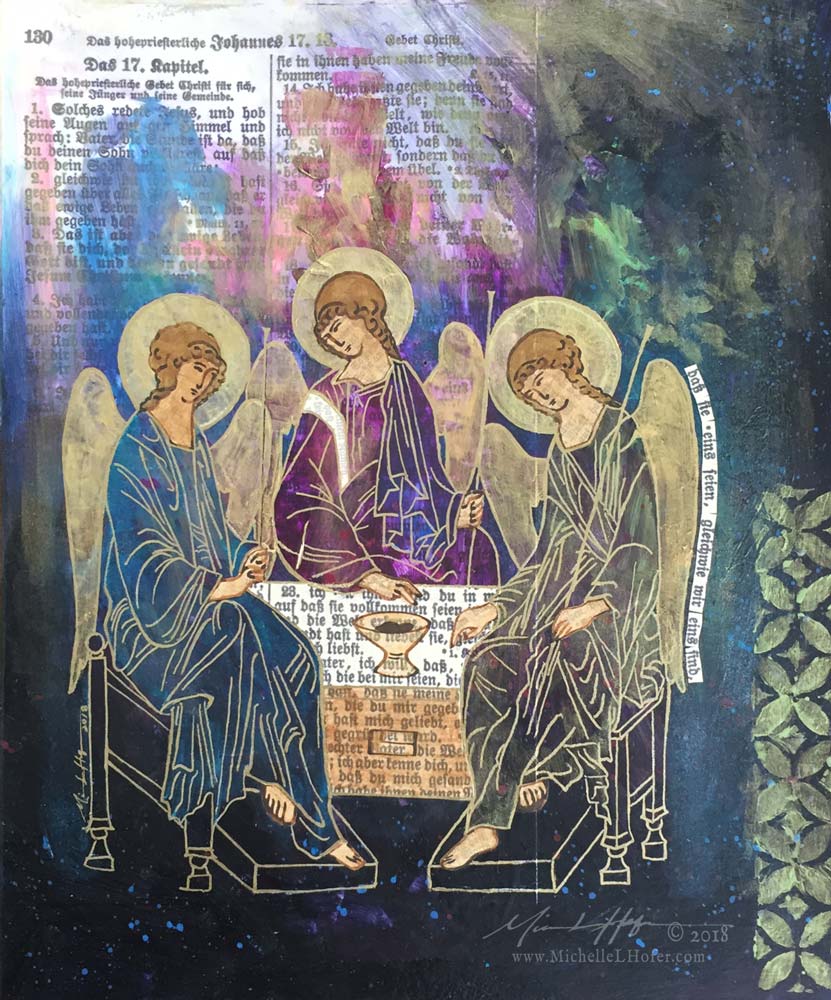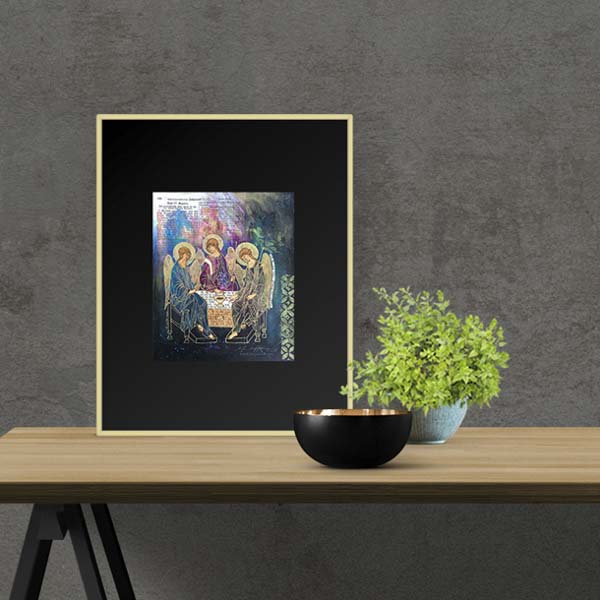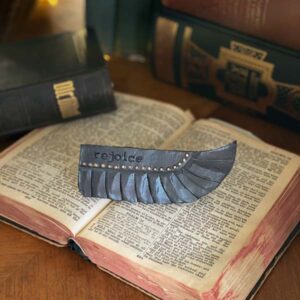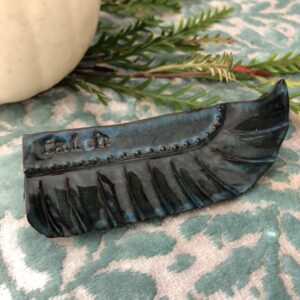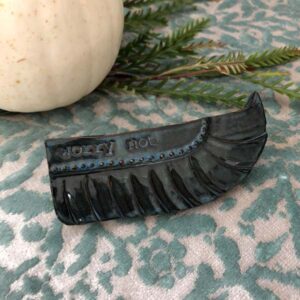We Are One – fine art print
$45.00 – $85.00
This archival quality 8 x 9.5 inch print features the Holy Trinity after Andrei Rublev’s Hospitality of Abraham in rich jewel tones and metallic gold line work with German Scripture text background and collage application. The imagery from one of Christianity’s most beloved images, is a vibrant expression of devotion on a rich multi-layer background exploration of color and texture. Printed with archival inks on metallic archival quality paper by the artist.
Unframed option — Arrives in a clear protective sleeve with certificate of authenticity. Print is signed by the artist.
Framed option — Arrives in a brushed gold metal frame 14 x 18 inches with bevel cut black mat, protective glass and certificate of authenticity. Print is signed by the artist.
ARTIST STATEMENT
GERMAN TRANSLATIONS OF APPLIED TEXT
Background — John 17
...that they may be one even as we are one… — John 17:22
I created these pieces in conjunction with the Lost Sight blog series written at the 500-year anniversary of the Protestant Reformation. The 12-part blog series explored the disruption of the art and faith connection that came about during the Reformation. Pages of text copied from a Luther Bible I found at the local recycling center became the base for the three collages. My intent was to restore a traditional icon image to each of the passages selected thereby reconnecting the Protestant faith (with its high regard for Scripture) to the Christian expressions of art it had abandoned.
The passage of Jesus’ prayer for His followers to be in unity from John 17 is one that often comes to mind whenever I work with a version of Rublev’s Holy Trinity. I have chosen to reunite these beautiful words and images here in this piece.
This icon image is an illustration from the story of God’s appearance to Abraham in the form of three men found in Genesis 18. It’s true title is The Hospitality of Abraham. Rublev uses this image of God appearing as three persons to illustrate the Triune God. The mysterious way in which these three figures are communing and interacting with each other and the similarities/differences in the figures portrays the Trinity concept of "one God in three persons". Here is a circle of love. You can read it in their faces. Humility and grace are present also along with a profound peace.
It is out of Russia’s heritage of faith that perhaps the world’s most well-known work of Christian art comes to us. Andrei Rublev was a Russian monk who devoted his life to the painting of icons and frescoes in and around Moscow, Russia. He painted this image in memory of Saint Sergius, the founder of Russia’s Monastery of the Holy Trinity.
Saint Sergius had a wonderful vision that all Russia should be united around the Name of God. In this unity of faith and love, the Russian people would conquer “the devouring hatred of the world by the contemplation of the Holy Trinity.”
All three figures hold staffs in their left hands indicative of their authority and power. On the table sits a single bowl of food, also indicative of their oneness.
The Father, seated left, is dressed in a luminous, iridescent cloak as the Father cannot be seen and yet is visible in all creation. It would also seem a visual representation of Psalm 104:2 - “You robe yourself in light as in a garment.” With his right hand he gestures the sign of blessing toward the figure of Christ.
At center, sits Christ the Son. His garment is brown, to represent his human, earthly nature, with a blue cloak to represent his heavenly, divine nature. A band of gold across his shoulder, symbolizing government authority, signifies Christ’s kingship. His right hand gestures towards the chalice indicating his divine mission to become the sacrificial lamb who will take away the sins of the world. His gesture of two fingers again is a reference to his dual nature — fully man and fully God.
The Holy Spirit is seated at right wearing both blue and green, the colors of heaven and earth. It is the Spirit who moves through all — heaven, earth, water, sky. The green cloak is also representative of the new life and renewal in the Spirit as experienced by believers. The figure’s hand gestures downward, perhaps to the small opening at the front of the altar representative of the customary placement of relics and remains of saints by certain traditions.
“We must give all our attention to that open space [at the front of the table] because it is the place to which the Spirit points and where we become included in the divine circle... I come to the realization that this rectangular space speaks about the narrow road leading to the house of God. It is the road of suffering. While it’s four corners remind us that it represents the created order, including all people from north, south, east and west, its position in the altar signifies that there is room around the divine table only for those who are willing to become participants in the divine sacrifice by offering their lives as a witness to the love of God.” — Henri Nouwen

Additional information
| Weight | 1 oz |
|---|---|
| Dimensions | 8 × 10 in |
| Framing option: | Unframed Print, Framed Print —gold metal frame/black mat |
